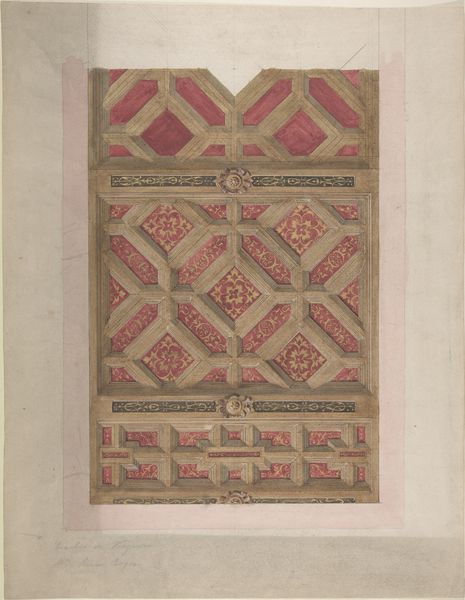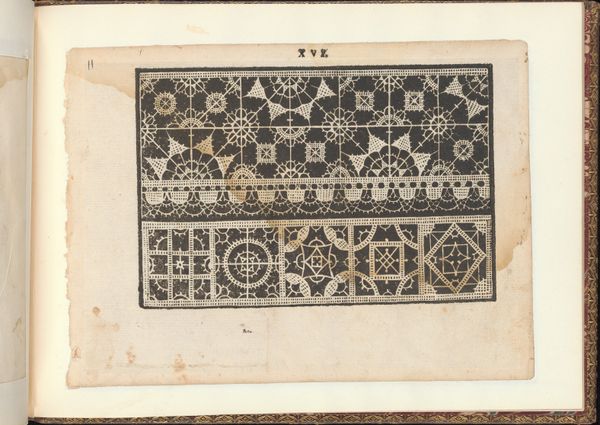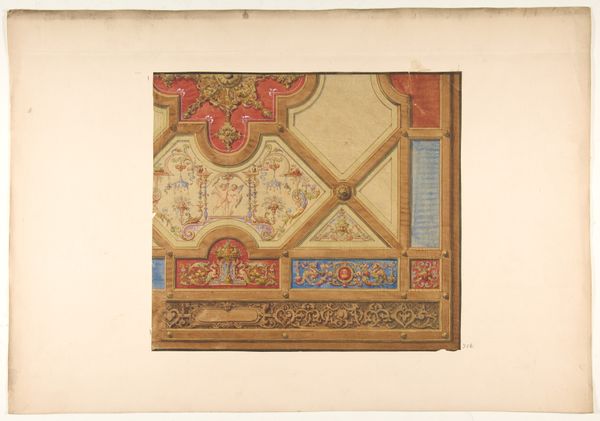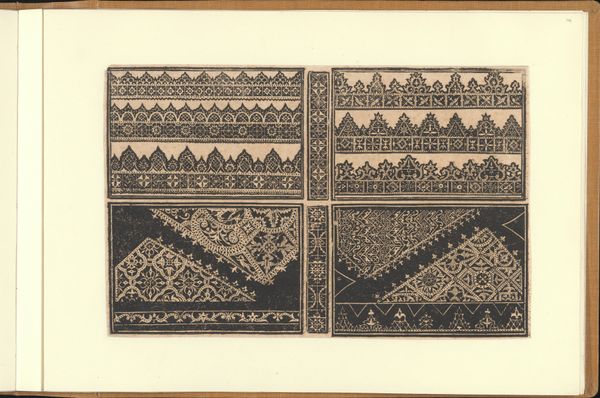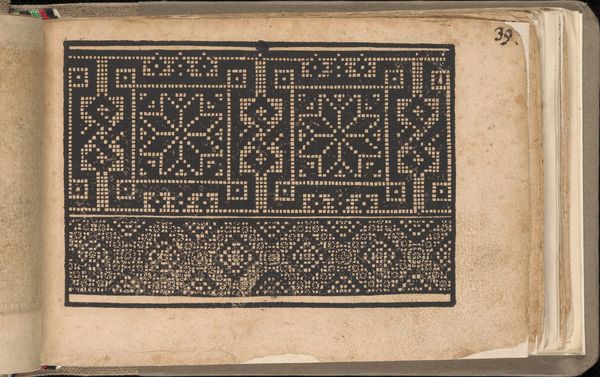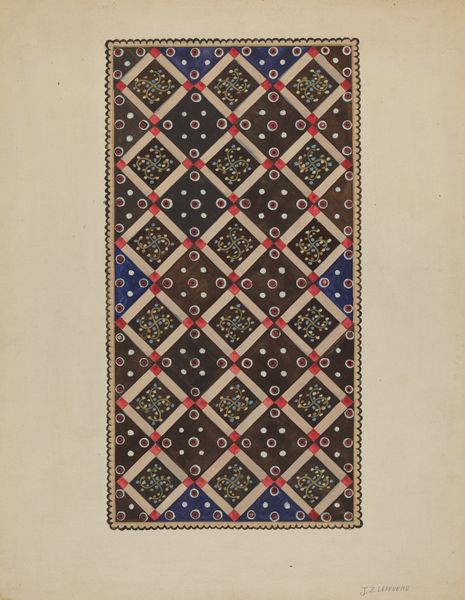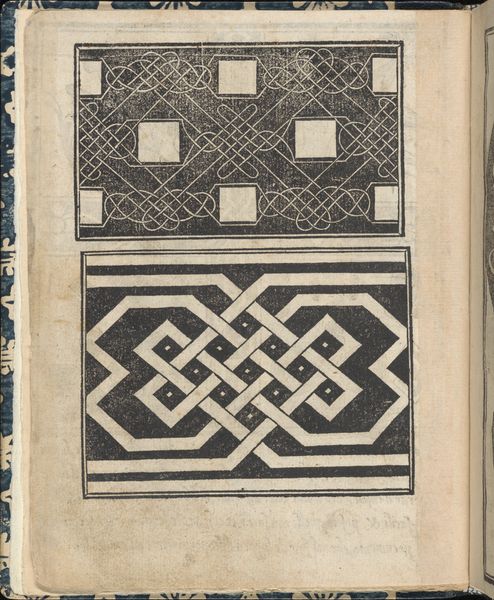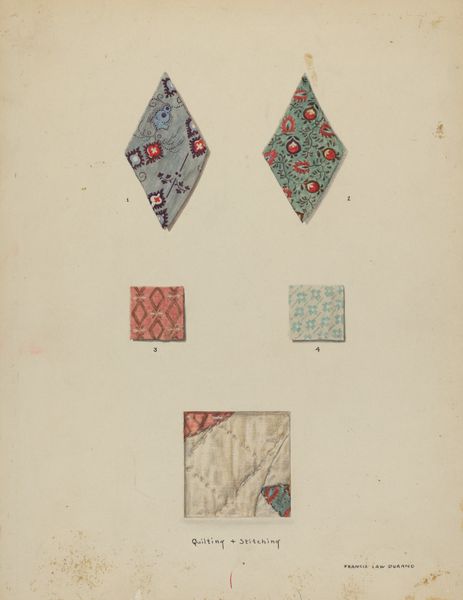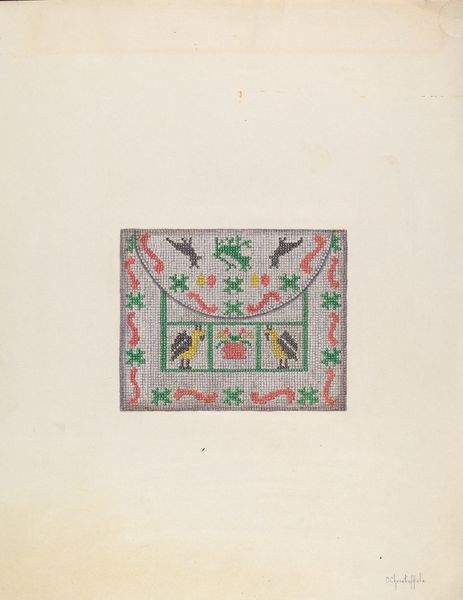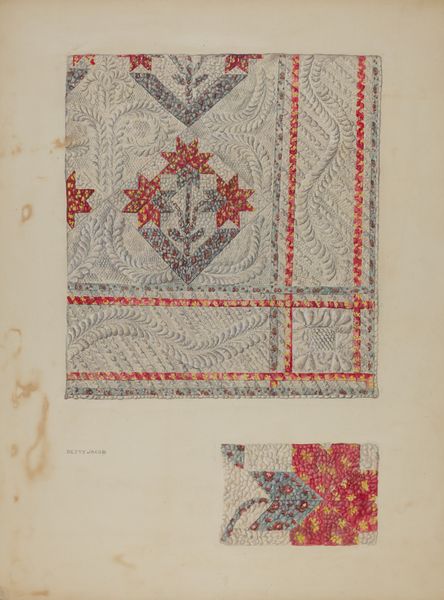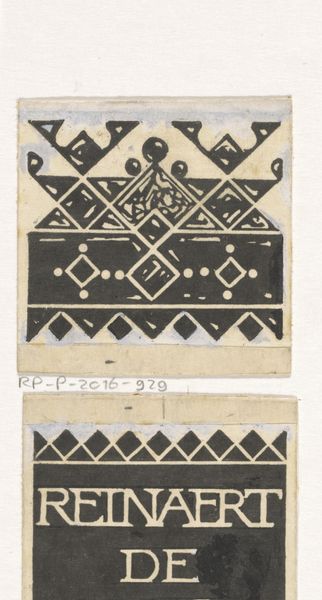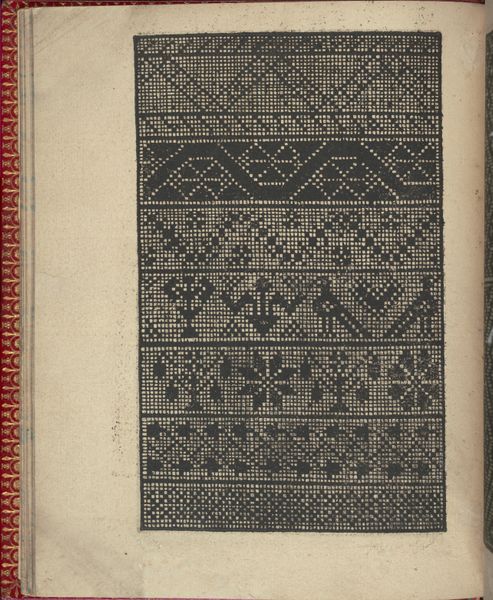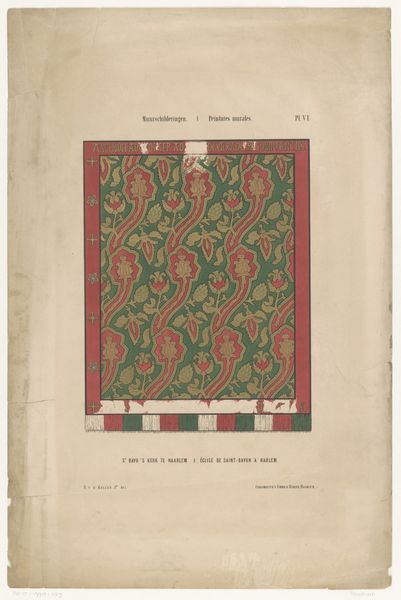
graphic-art, print, watercolor
#
graphic-art
#
water colours
# print
#
watercolor
#
watercolor
Dimensions: height 418 mm, width 290 mm
Copyright: Rijks Museum: Open Domain
Editor: We're looking at "Acht Motieven" – Eight Motifs – a print and watercolor work by J. Carpey, likely created between 1866 and 1900. I find the patterns very formal and decorative, almost like textile designs. How do you interpret this work? Curator: These motifs, with their echo of gothic ornamentation, invite us to consider the political and social forces that drove the 19th-century fascination with the medieval era. How did the rediscovery of these older motifs affect national identity formation in Europe, especially regarding class and power dynamics at the time? Editor: That’s an interesting idea! I was focusing more on the aesthetics, the color choices and how they are organized, but you are taking a wider view. Curator: It's more than just aesthetic pleasure. These designs are rooted in cultural movements. What power structures were these patterns meant to evoke or perhaps even legitimize? Consider how the application of "historical" styles often reinforced existing hierarchies. The work also brings forward a dialogue on appropriation, whose historical narrative are they telling? Editor: So, you're saying the artist, consciously or unconsciously, was engaging in a dialogue about cultural authority and potentially reinforcing it? Curator: Precisely. By employing these historically charged motifs, Carpey participates in a larger conversation about identity, heritage, and the very definition of "taste." These aren't neutral decorations, but charged symbols. What contemporary discussions might they contribute to about cultural heritage, national symbolism, and identity? Editor: I see your point. The designs seemed simply ornamental at first glance, but it is amazing to appreciate its historic meaning as well. Curator: Exactly, engaging with art is understanding the layered and nuanced discussions held throughout the passage of time.
Comments
No comments
Be the first to comment and join the conversation on the ultimate creative platform.
